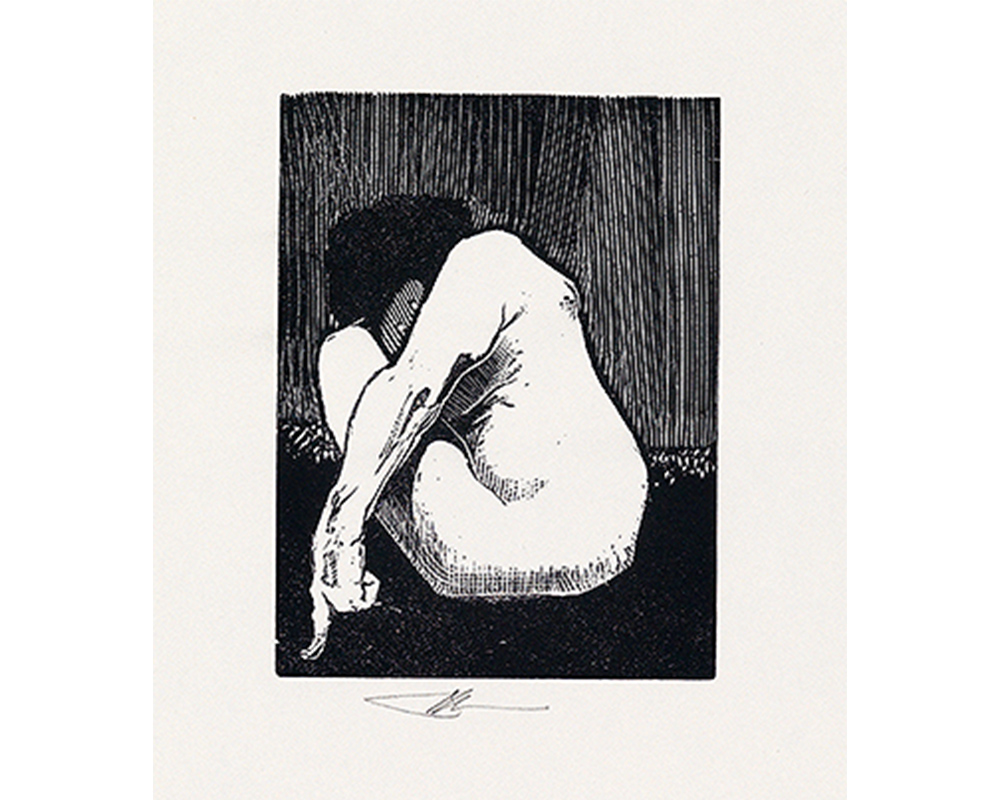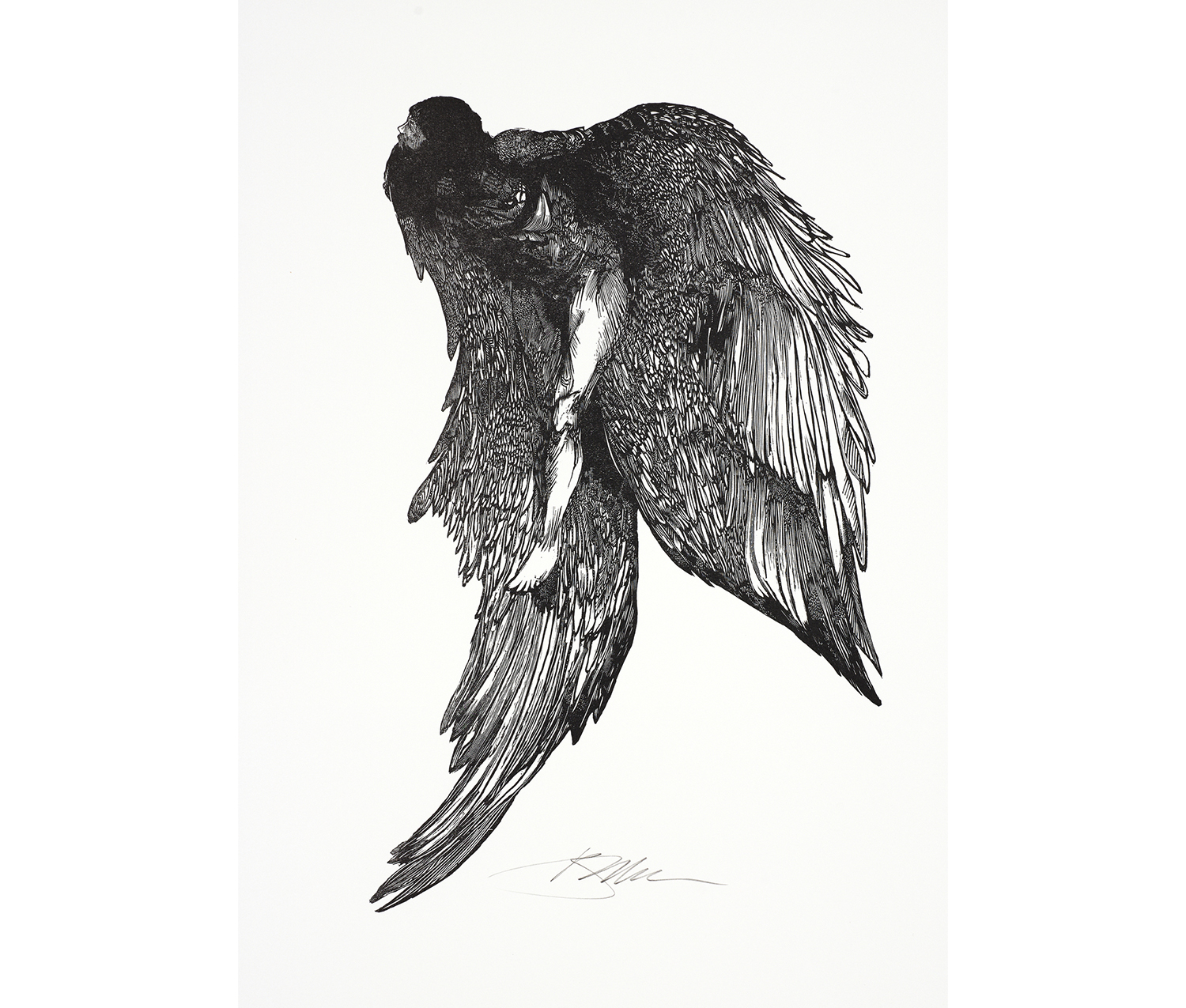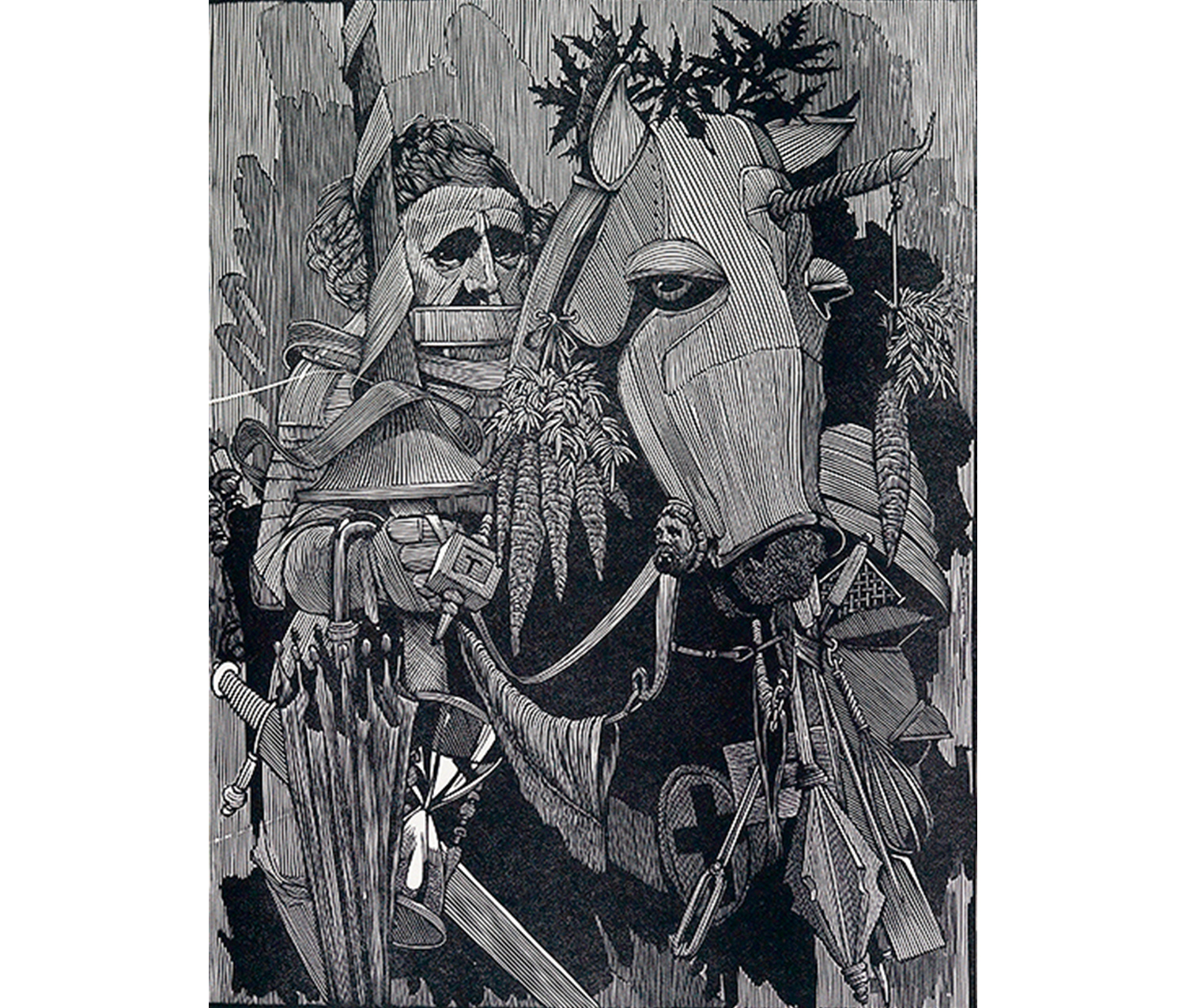
The Works of Barry Moser
Guest blogger Renee Klann is a Smith College student, class of 2019. She is the 2015-2017 STRIDE Scholar in the Cunningham Center for Prints, Drawings, and Photographs.
This post discusses the art of Barry Moser, an printmaker and professor at Smith College. A recent gift of 91 of his works was made to the museum by Jeff Dwyer and Elizabeth O'Grady.
Barry Moser is one of the most well-respected wood engravers and book designers working today. What’s most interesting, though, is how he reached this point in his career. He found his preferred media by coincidence and is mostly self-taught.
Moser was born in Chattanooga, Tennessee in 1940. As a child he liked to draw, and although his family didn’t support his interest in art, he studied painting in college, first at Auburn University and then at the University of Chattanooga. Paint would not remain his primary medium, however. While at Auburn, he saw Leonard Baskin’s wood engraving print The Death of the Laureate. “I was smitten by his work,” Moser said in his bookIn the Face of Presumptions, and he decided to attempt wood engraving himself.
Wood engraving is a demanding medium, in which a print is made from a block of boxwood with lines cut into it, producing an image with white marks on the dark background of the inked block. Moser got some wood blocks and tools, and in his words “butchered them in short order, making wood engravings that looked more like linoleum cuts or potato prints than engravings.” One of those early wood engravings was Une Ecraseuse (A Bug-crusher). Moser is overly critical of this piece; Une Ecraseuse is much more polished than a potato print, but he’s right that the shading on the figure and the background could be more refined. Nonetheless, it’s clear that Moser has a strong sense of what he wants the image to look like and is trying to make his technical skills match his ambitions.
By the time Moser made Une Ecraseuse, he had moved to Massachusetts, where he taught art at Williston Academy. To print his first engravings, Moser went to Harold McGrath at the Gehenna Press in Northampton for assistance. The Gehenna Press shop would prove to be extremely influential for Moser, because it was his first exposure to handmade books. “That moment was the great epiphany in my life, and I wish I knew the exact date,” he later recalled. With that inspiration, Moser began to learn everything he could about printing. He bought a used press for Williston Academy, and printed his first book,The Red Rag, on it.
In 1970 Moser was accepted to the MFA program at the University of Massachusetts, Amherst, where he studied wood engraving with Jack Coughlin and Fred Becker. When Moser wanted to give up on wood engraving, Becker encouraged him to continue. Despite this formal training, Moser’s process of learning wood engraving was unconventional and largely independent. Moser said other artists “showed me a couple of tricks . . . but in the main I am self-taught.”
Eventually Moser’s work paid off, and he made engravings he was satisfied with. He said “After two years of trying and failing, I finally broke through – with a print called Icarus Agonistes. I knew what wood engravings were supposed to look like—I had studied plenty of them—but the muscles in my hands and arms didn’t know or understand what the movements and actions were supposed to feel like.”Icarus Agonistesis a depiction of the character from Greek myth; his father Daedalus made him wings held together with wax, which melted when Icarus flew too close to the sun. In this print Icarus has large wings with a dense mass of lines forming the feathers. In addition to the beautiful texture of the wings, Icarus’s pose is interesting because he’s not flying with his wings outstretched, but rather bent and tilted to the side, with one wing extended--as if he’s paused to listen to his father’s warning.

Barry Moser. American, born 1940. Icarus Agonistes, from Fifty Woodengravings, 1978. Wood engraving on white wove Mohawk Superfine paper. Gift of William M. MacRae. SC 1981.23.31.
In the 1980s Moser designed and illustrated several books that solidified his reputation as an artist and book designer, including Alice’s Adventures in Wonderland, Through the Looking-Glass and What Alice Found There, and The Wonderful Wizard of Oz. Each of these books was illustrated with dozens of wood engravings. The prints are beautiful images by themselves, but they are meant to complement the text.

Barry Moser. American, born 1940. The White Knight from Through the Looking-Glass and what Alice found there, 1983. Wood engraving printed in black on medium weight, slightly textured, cream-colored paper. Gift of Elizabeth O’Grady and Jeffrey P. Dwyer. SC 2014.54.10.
The White Knight is based on an image of Lewis Carroll, the author of Alice’s Adventures in Wonderland. Notice the uniform lines used for shading the armor and the different textures of the armor and the carrots, made by carving into the wood block with different tools or at different angles. Even though it’s a rather crowded composition, Moser keeps each element clear, and the viewer’s eyes are drawn to the knight’s face.

Barry Moser. American, born 1940. Delicate China Maid from The Wonderful Wizard of Oz, 1985. Wood engraving printed in black on medium weight, smooth, white paper. Gift of Elizabeth O’Grady and Jeffrey P. Dwyer. SC 2014.54.32.
Do you recognize Judy Garland as the delicate China maid? Moser decided not to include this image in the book, but he did use another, less familiar picture of Garland as an homage to her role in the film The Wizard of Oz. Delicate China Maid is striking because it has large areas of black and white for the girl’s hair and shirt, which put the focus on the well-controlled shading in her face and the background.
Barry Moser’s success results from a combination of coincidence and a great deal of perseverance to master the media of wood engraving and book design.